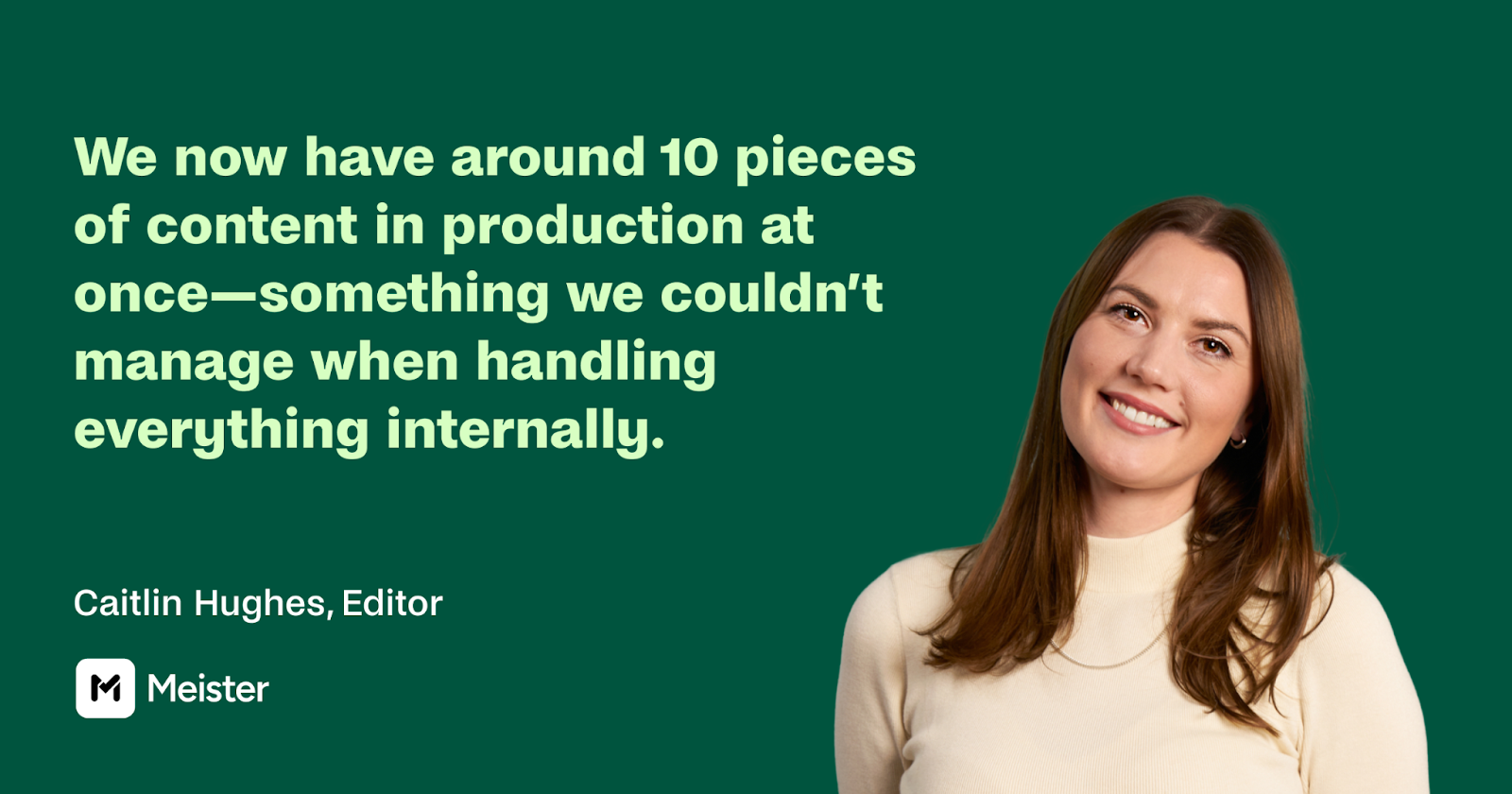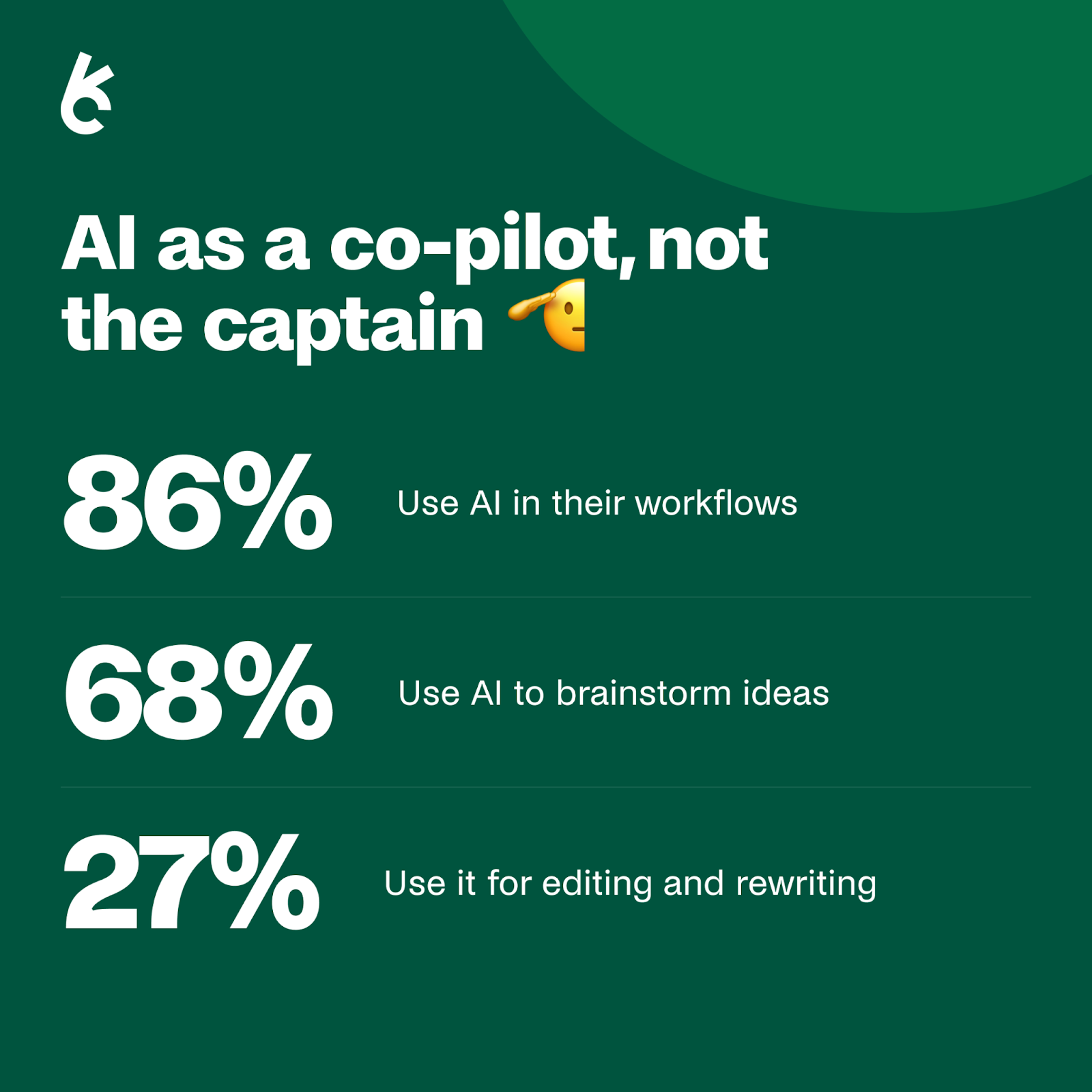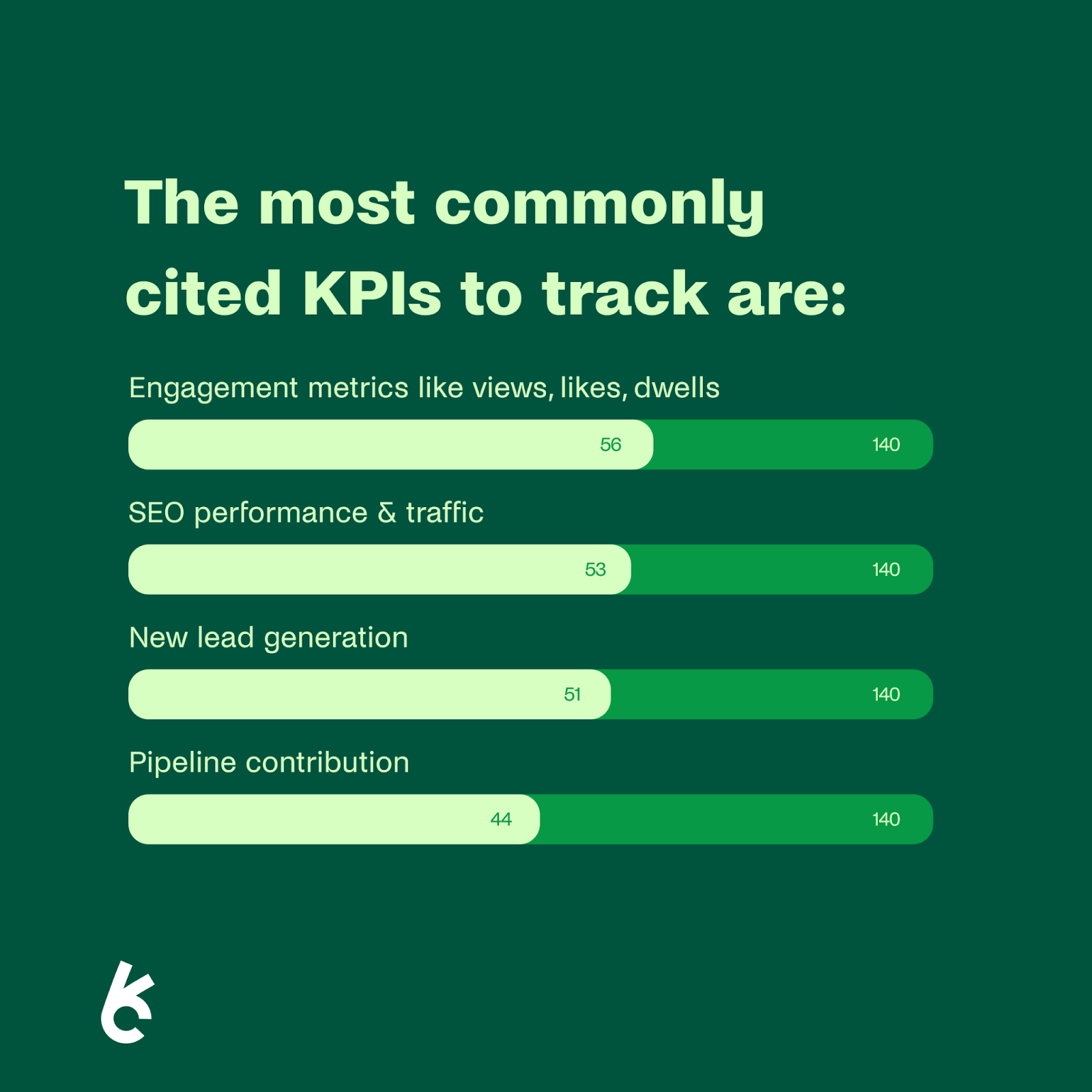50 statistics every marketer should know in 2025

If you’re working in marketing this year, you already know the reality: too many channels, not enough people, and AI tools that are as likely to save you time as it is to create new headaches. The demands are constant, the pace is relentless, and the margin for error feels smaller than ever.
That’s the lived experience. But the numbers reveal the bigger picture. We spoke to more than 150 marketers to understand how teams are working in 2025. What’s powering their workflows? Where is the strain showing? How are AI and freelancers shaping the day-to-day?
The result is a snapshot of a profession in transition. Fifty statistics that map both the pressure and the progress. Because while the cracks are real, so too are the strategies teams are using to adapt, protect quality, and keep moving forward.
Here’s what the data tells us.
Content teams: small but mighty
- 38% of companies don’t even have a dedicated content team.
- The most common team size is just 2–5 people.
- 21% of marketers are flying solo.
- 77% say their workload is “busy but manageable.”
- 38% feel “stretched” or “completely overloaded.”
- 40% say that overload isn’t a one-off; it happens often or constantly.
- 45% say “content velocity” (translation: more, faster) is their biggest pressure.
- 29% of the list identifies proving ROI as a top concern.
- 15% say lack of headcount keeps them up at night.
- 74% rate their workload a 3 or 4 out of 5, coping, not cruising.
TLDR: Content teams are the engine of modern marketing, but most are running on fumes.

Read how Meister scales content without the headcount here.
AI: The co-pilot, never the captain
- 86% of marketers use AI in their workflows.
- 35% have it fully embedded into their processes.
- 51% are actively experimenting with new AI tools.
- 74% use ChatGPT, more than any other AI app.
- 68% use AI to brainstorm ideas.
- 49% use it to draft content.
- 48% use it for editing and rewriting.
- 33% use it to repurpose existing content.
- Just 6% said they don’t feel confident using AI.
- 24 respondents said ChatGPT was the single most impactful tool in their stack.
Marketers love AI for the heavy lifting, but when it comes to creativity, the human hand still holds the pen. Phew.

Read: Red flags everywhere: why AI detectors keep getting it wrong
Freelancers: lifelines with growing pains
- 84% of teams outsource at least some of their content.
- 68% outsource specifically to freelancers.
- 57% run hybrid setups (in-house + external).
- 92% report challenges with freelancers or agencies.
- 43 teams outsource blog writing and SEO.
- 17 outsource graphic design.
- 16 outsource video production.
- 15 outsource translations and localisation.
- 44 respondents say “finding the right people” is their biggest pain.
- 35 say freelance costs are a constant issue.
Freelancers help teams scale, but the magic happens when they’re treated like true teammates, not just task-takers.
Read: 5 mistakes to avoid when working with content freelancers
Tools: Patchwork stacks and pet peeves
- 34% described their tech stack as “scrappy, but it gets the job done.”
- One respondent admitted to juggling 17 different platforms. Wow.
- Notion leads the pack, used by 43 respondents.
- Asana comes next with 22.
- Trello and Jira tie with 11 each.
- ClickUp isn’t far behind with 10.
- Only 12 respondents said Notion became their true “single source of truth.”
- HubSpot was the most frustrating tool, cited by 6 respondents.
- Microsoft software (Office, Teams) was criticised as clunky and slow.
- ChatGPT, Notion, Asana, and Claude were the tools teams loved most.
Tech stacks are less like symphonies and more like garage bands, messy, but they somehow get the job done.
Read: Quality content in 2025: Why it’s in the eye of the stakeholder
Measurement: beyond the clicks
- 53 respondents measure website performance as a key metric.
- 51 track new lead generation.
- 44 track contribution to the sales pipeline.
- 56 track engagement (views, likes, dwell time).
- 35 said ROI is their biggest concern.
- 28 said “aligning on tone and quality” is a top worry.
- 25 said “internal alignment” slows them down.
- 37 flagged “revisions and approvals” as a bottleneck.
- 29 cited cross-functional requests as a major drain.
- 86% believe AI is an enabler of ROI, not a replacement for creativity.

Marketers are still counting clicks, but the best ones are also tracking what really matters: resonance, relevance, and revenue.
Read: Double your content output without hiring: 5 strategies for scaling content
The bottom line
The findings are clear. Content teams in 2025 are smaller, busier, and leaning heavily on AI and freelancers to meet rising demands. They are working with fewer resources but facing greater expectations.
And yet, quality is not slipping away. If anything, it is being defended more fiercely. Marketers know that in a landscape oversaturated with copycat content, real value comes from work that is thoughtful, consistent, and human.
The future of marketing will not be defined by how much content teams can produce. It will be defined by whether that content resonates, earns trust, and creates impact. These statistics indicate a shift away from chasing volume and toward prioritising quality.
Treat this report as more than just a list of benchmarks. It’s more of a mirror to remind you that if you feel stretched thin, you’re not alone. And that the real competitive edge isn’t about doing more, faster. It’s about doing the right things, better.



.webp)


.webp)




